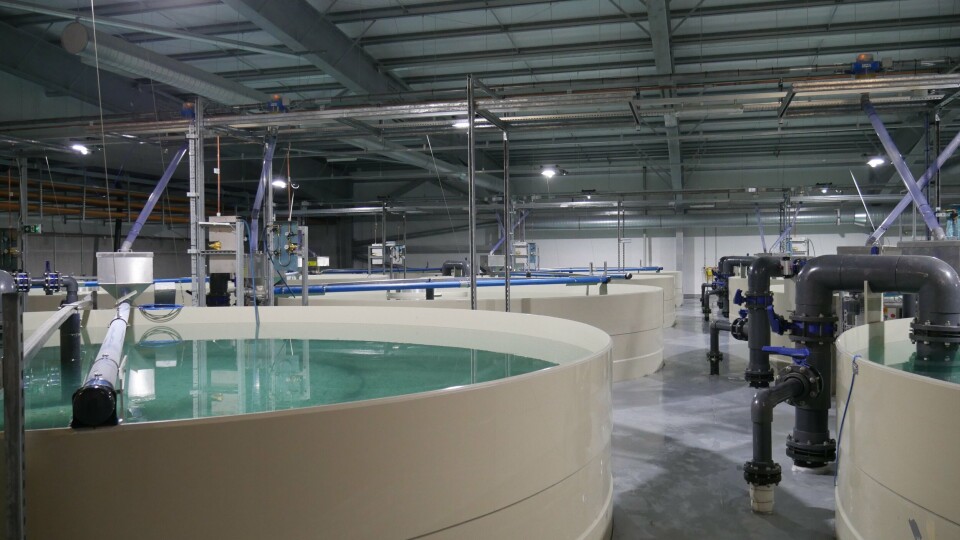
Oxygen fault killed 500,000 smolts at new hatchery, reveals Marine Harvest
Marine Harvest Scotland lost half a million smolts when a fault occurred in the ‘failsafe’ system delivering oxygen to fish at its flagship Inchmore hatchery in August, the company has revealed.
Operations director Gideon Pringle said staff had to quickly prioritise which fish to save after the equipment failure at the recirculating aquaculture system (RAS) facility in Glenmoriston.
The £28 million hatchery took delivery of its first eggs late last year and was officially opened by Rural Economy Secretary Fergus Ewing in June.
3% of stock
“The event unfortunately caused the death of about 3% of the farm’s stock - about 500,000 fish at 80 grams weight,” said Pringle.
“We have since repaired and adapted our oxygen supply process and equipment to ensure the farm operates as designed. Fortunately, we have additional fish in the system to compensate for this loss and all seawater farms will be stocked as planned.”
Pringle said the incident was caused by the failure of a valve in what had been widely regarded as a robust and reliable oxygen control system.
“The whole event lasted for several hours,” he said. “The damage was done in the first hour after the alarm sounded.
“It was only because of the quick thinking of the staff, who were able to take very quick decisions about what could be saved and what probably couldn’t, that large numbers of fish were saved.
“The higher biomass, the ones that needed the most oxygen, were lost very, very quickly. They were the fish that were ready to go to sea, so there was a big biomass but a comparatively low number – there were seven million fry in the hatchery, and about two million of the next generation that were about 20 grams, and it was key that they were all saved.
Greater numbers
“We chose to save the greater numbers for the future of the company, because these were large numbers of fish that would affect many generations, and there were comparatively few of the older fish. And the older fish needed the highest amount of oxygen to keep going. When we saw the valve had failed we knew the [oxygen] tanks were going to drain and there was no way of stopping it.”
The fish that died were the first generation bred at the new hatchery and were just a couple of weeks away from being put to sea.
More than 1.6 million of the generation survived and were transferred to lochs to finish off their preparation process for moving to sea pens. Pringle said that although the incident had meant there was a delay getting smolts to farms, no production would be lost.
Make up the losses
He said that because the dead fish had been the first of four generations in a year, fish from the next generation close behind could be advanced to make up the losses, giving the hatchery a year’s breathing space to get numbers back up with eggs “not even bought yet”.
Pringle said the fact that such an incident could occur in a state-of-the-art facility such as Inchmore showed the complexities and difficulties that remain with raising fish on land.
“This move on to land that many people talk about, it’s a very sophisticated level of technology for what is a farming process,” he said. “If you think about chickens or any other land animal, it’s quite simple: they’re self-sustaining. But to bring fish on to land, you’re bringing them out of their natural environment and the level of technology to wrap around them to keep them alive is very, very high.
“There is a belief that it’s easy to move fish on to land. It’s not.”
“It’s marred an otherwise exemplary project, because up to that point it had been close to perfect – cost control, the whole technology of the plant, everything was just working fantastically, and when I got the phone call I couldn’t believe it,” he added.
“The fish were fully prepared, they were in the final light phase going to sea, so the full cost is in them, vaccination and everything; all they had to do was transfer.”






















































